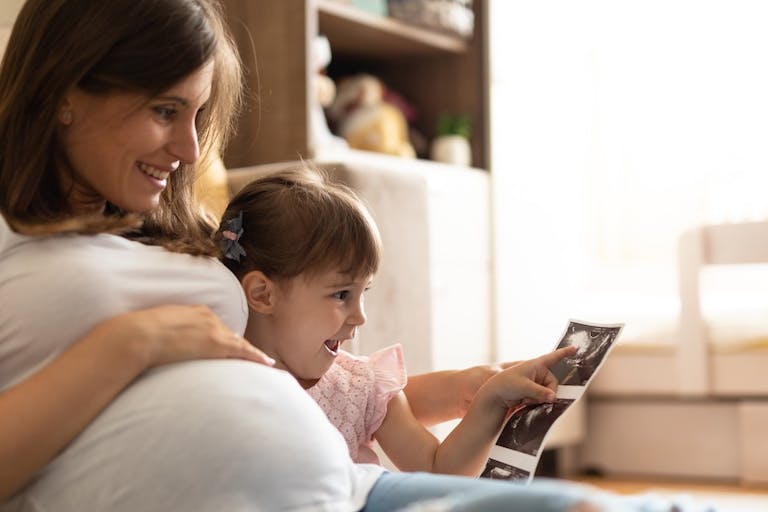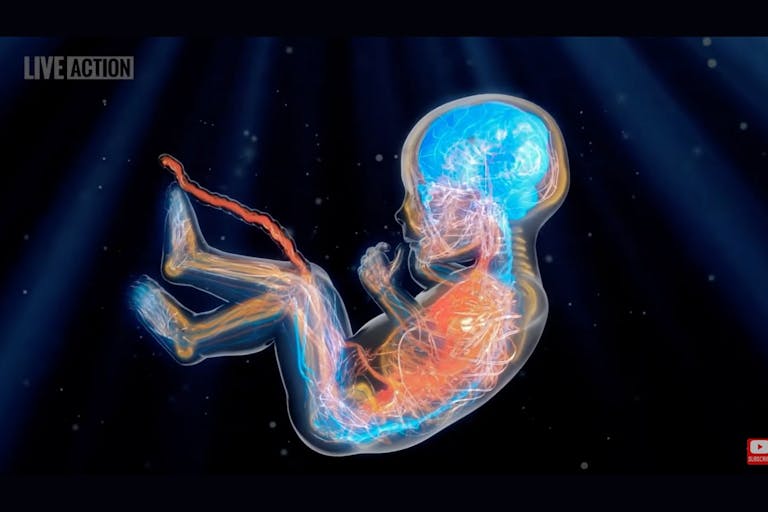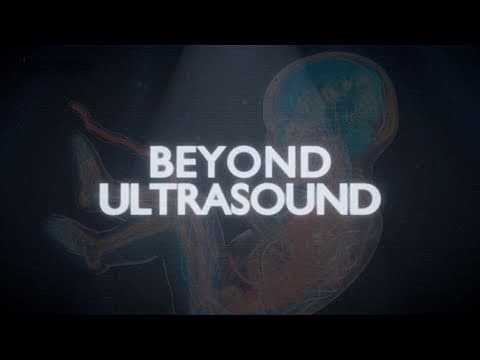
Pregnancy centers continue to surpass brick-and-mortar abortion businesses
Carole Novielli
·
Live Action's 'Beyond Ultrasound' video dives deeper into human prenatal development
One of the most exciting parts of a parent's life is seeing his or her preborn child on an ultrasound for the first time, but only so much can be observed on the screen when that little person is developing in incredible ways. A new Live Action video aims to give people a look at prenatal development "beyond the ultrasound."
Live Action first gave viewers a look inside the womb with "Meet Baby Olivia," a realistic, medically-accurate look inside the womb using computer animation.
"Beyond Ultrasound" gives another glimpse into the incredible development taking place during pregnancy.
While ultrasound can show parents their preborn child, "Beyond Ultrasound" helps to provide even more insight into how the child grows and develops in preparation for continuing his or her life outside the womb.

Beginning at 20 weeks gestation, "Beyond Ultrasound: The Journey of Human Development in the Womb," reveals the incredible milestones taking place just 18 weeks after fertilization. The video shows that at this point in pregnancy, the baby's skeletal structure is formed and beginning to harden. Additionally, message-carrying cells called neurons have begun rapidly multiplying in the brain.
The circulatory system is another major development at this stage of pregnancy. As "Beyond Ultrasound" explains:
Article continues below
Dear Reader,
In 2026, Live Action is heading straight where the battle is fiercest: college campuses.
We have a bold initiative to establish 100 Live Action campus chapters within the next year, and your partnership will make it a success!
Your support today will help train and equip young leaders, bring Live Action’s educational content into academic environments, host on-campus events and debates, and empower students to challenge the pro-abortion status quo with truth and compassion.
Invest in pro-life grassroots outreach and cultural formation with your DOUBLED year-end gift!
The heart beats about 140 times per minute, moving blood through a complete circulatory system that delivers oxygen and nutrients from the placenta.
"Beyond Ultrasound" then rewinds the clock, going backwards in pregnancy to 14 weeks gestation, or 12 weeks post-fertilization. While it is earlier in the pregnancy, the amount of development taking place is no less impressive. The arms and legs have begun to develop, but that's not all:
The baby's nervous system is developing fast, forming new pathways between the brain and body. The heart keeps getting stronger. It now beats a bit slower than earlier in the pregnancy, around 150 beats per minute.
Going even further back to eight weeks gestation (six weeks after fertilization), the video shows just how early the preborn child develops a beating heart (at about 22 days after fertilization). Even before some mothers learn they are pregnant, preborn babies have already begun to grow at an astounding rate:
The heart has four chambers and beats around 160 times per minute. The spine, arms, and legs are forming, and bone cells begin to replace cartilage. The brain is already active. It's divided into main sections, and early electrical activity can be detected. The baby starts to make tiny, reflexive movements that help muscles and nerves grow.
Even in the earliest weeks, we are already forming the systems that will sustain us for life.
Preborn children are small, vulnerable, and reside within their mothers' wombs — but as the video shows, these facts do not make them any less human. "Beyond Ultrasound" gives more incredible insight into the growth process of every single one of us... and the fact that we are human from our very beginning.
Live Action News is pro-life news and commentary from a pro-life perspective.
Contact editor@liveaction.org for questions, corrections, or if you are seeking permission to reprint any Live Action News content.
Guest Articles: To submit a guest article to Live Action News, email editor@liveaction.org with an attached Word document of 800-1000 words. Please also attach any photos relevant to your submission if applicable. If your submission is accepted for publication, you will be notified within three weeks. Guest articles are not compensated (see our Open License Agreement). Thank you for your interest in Live Action News!

Carole Novielli
·
Media
Cassy Cooke
·
Human Interest
Kelli Keane
·
Analysis
Sheena Rodriguez
·
Analysis
Cassy Cooke
·
Analysis
Cassy Cooke
·
International
Cassy Cooke
·
Analysis
Cassy Cooke
·
Analysis
Cassy Cooke
·
International
Cassy Cooke
·
Politics
Cassy Cooke
·